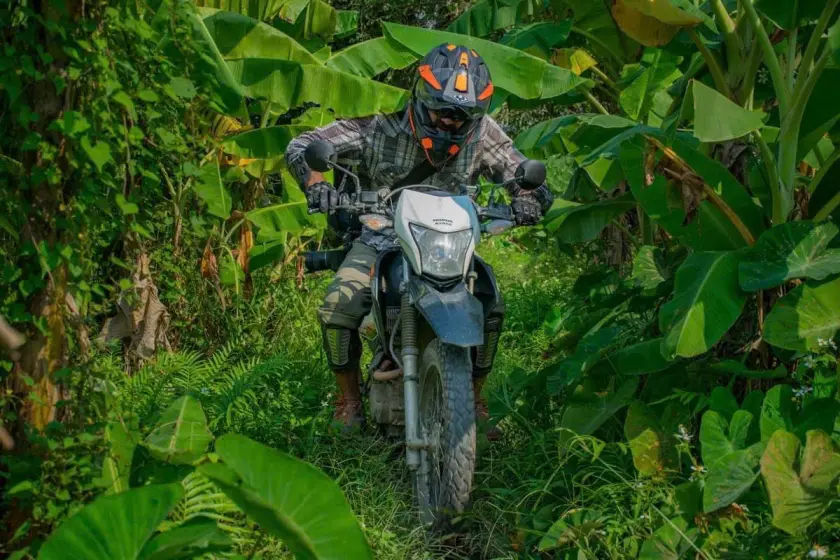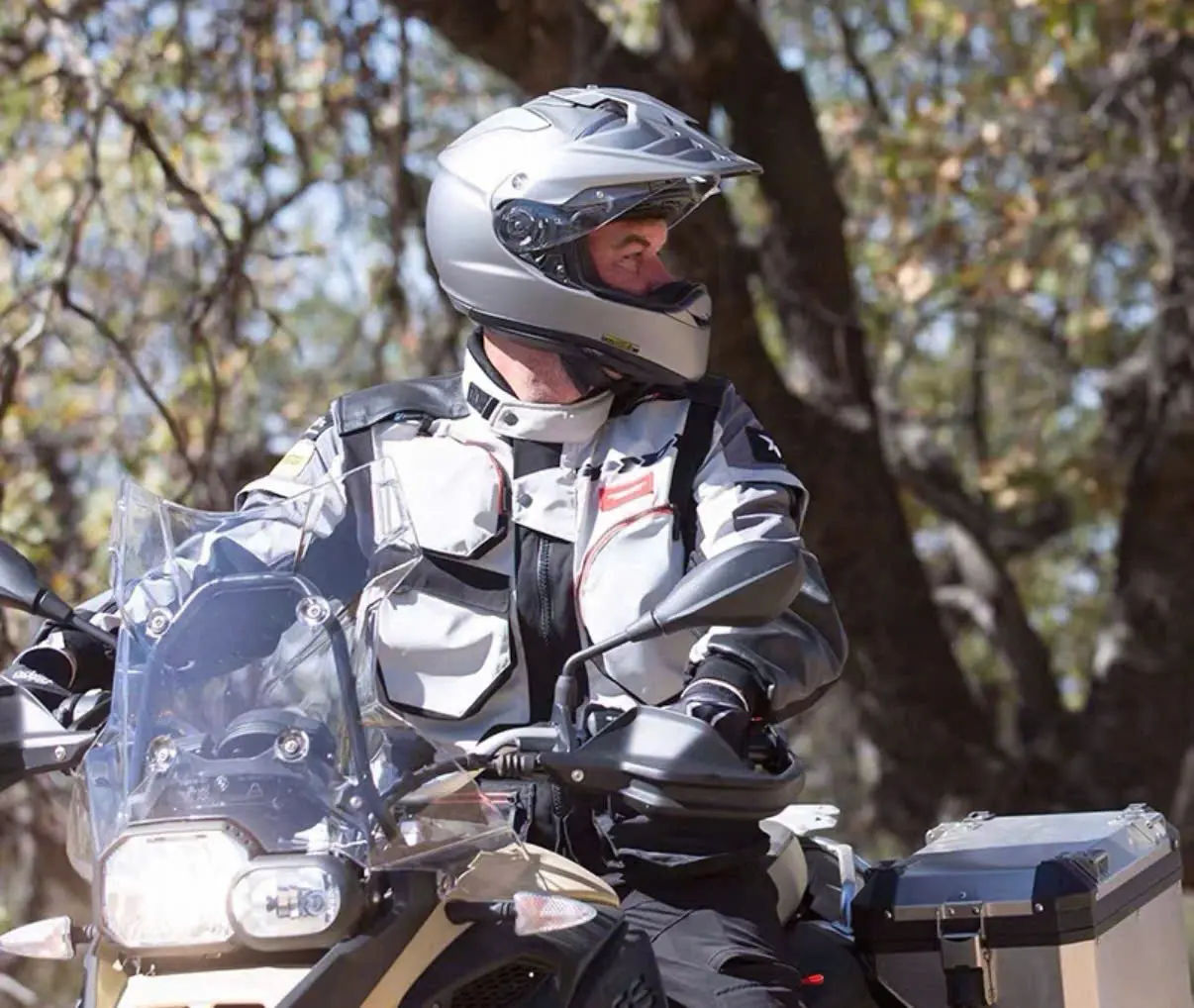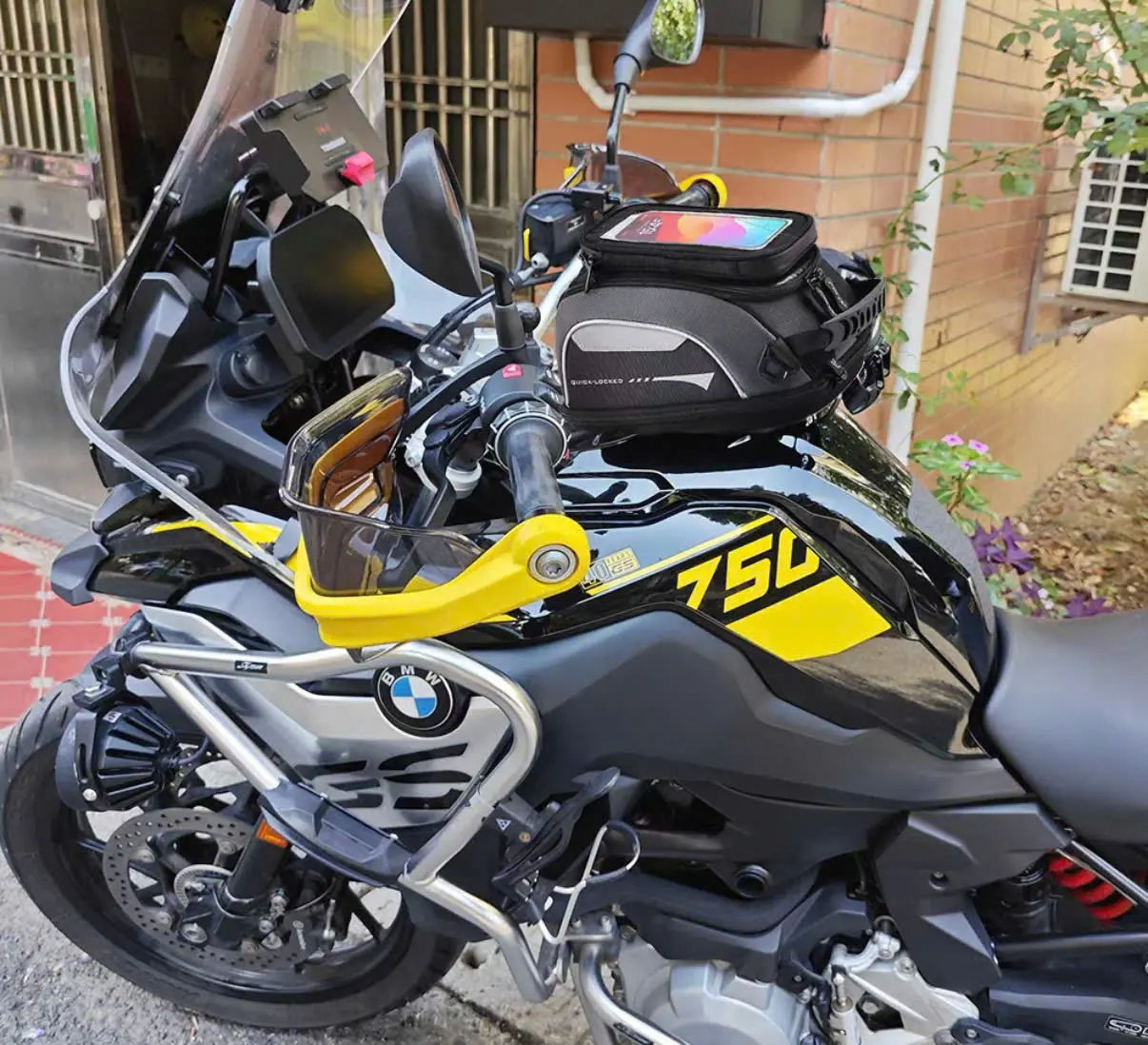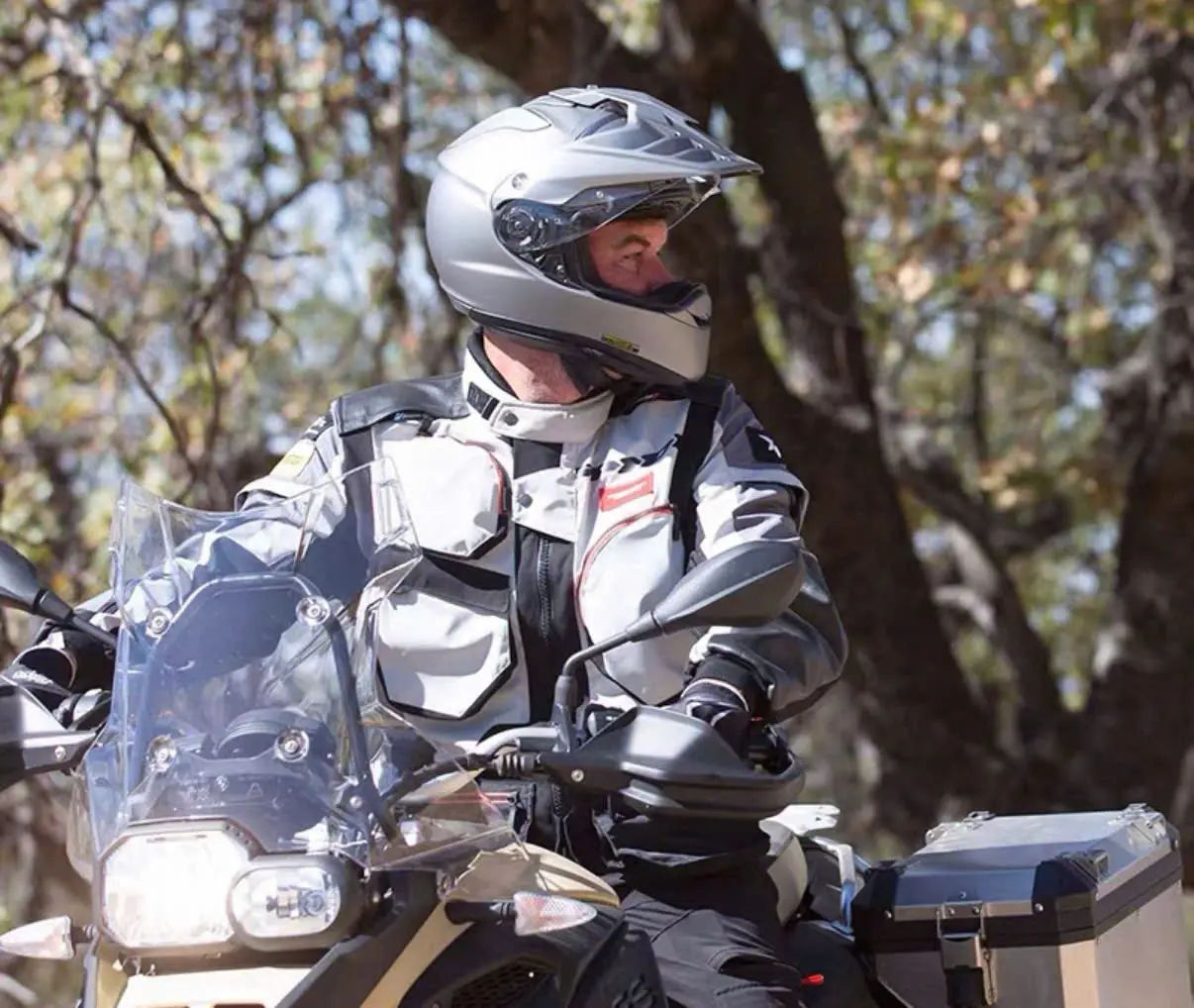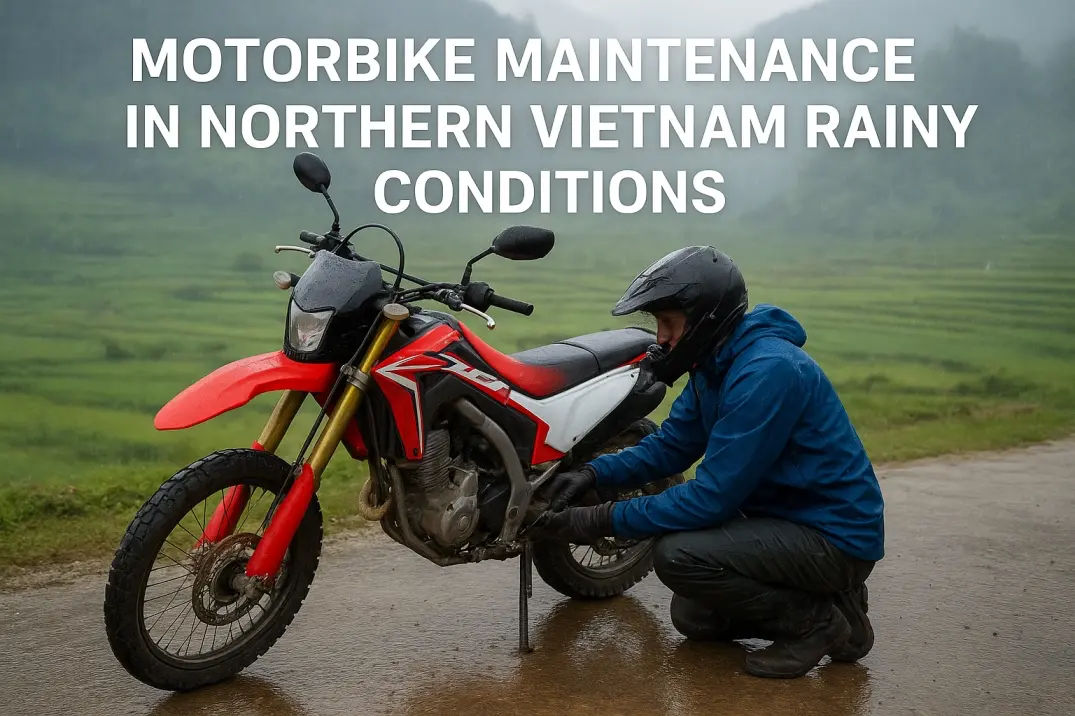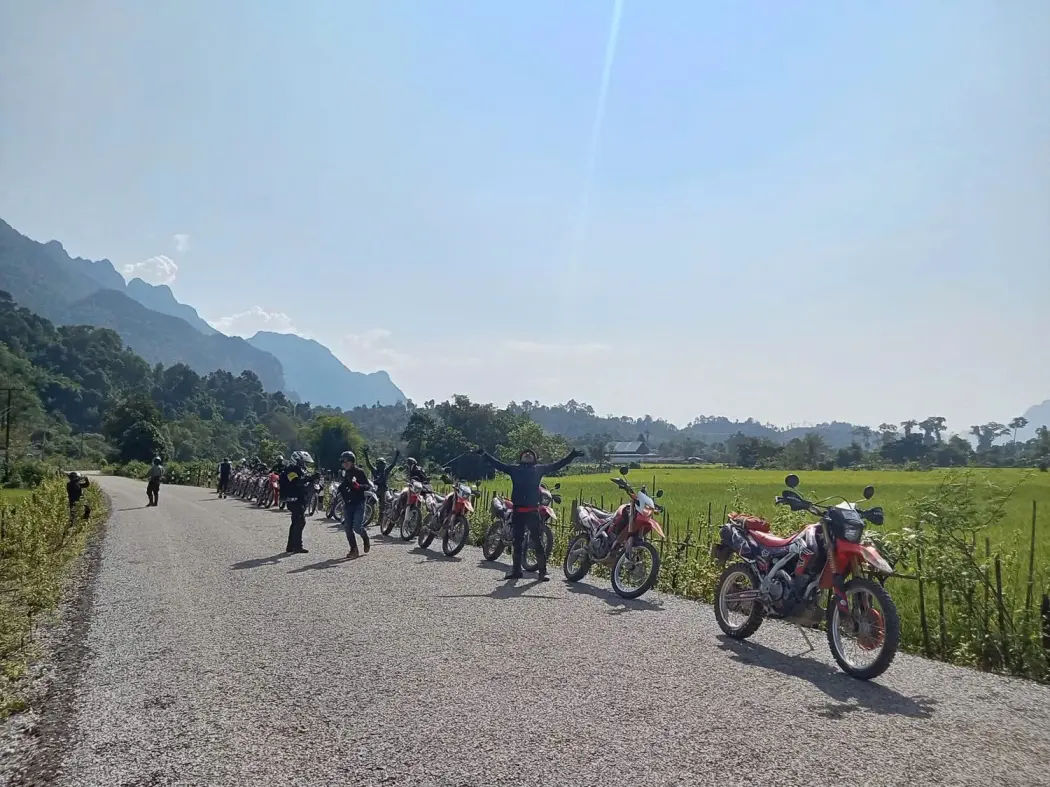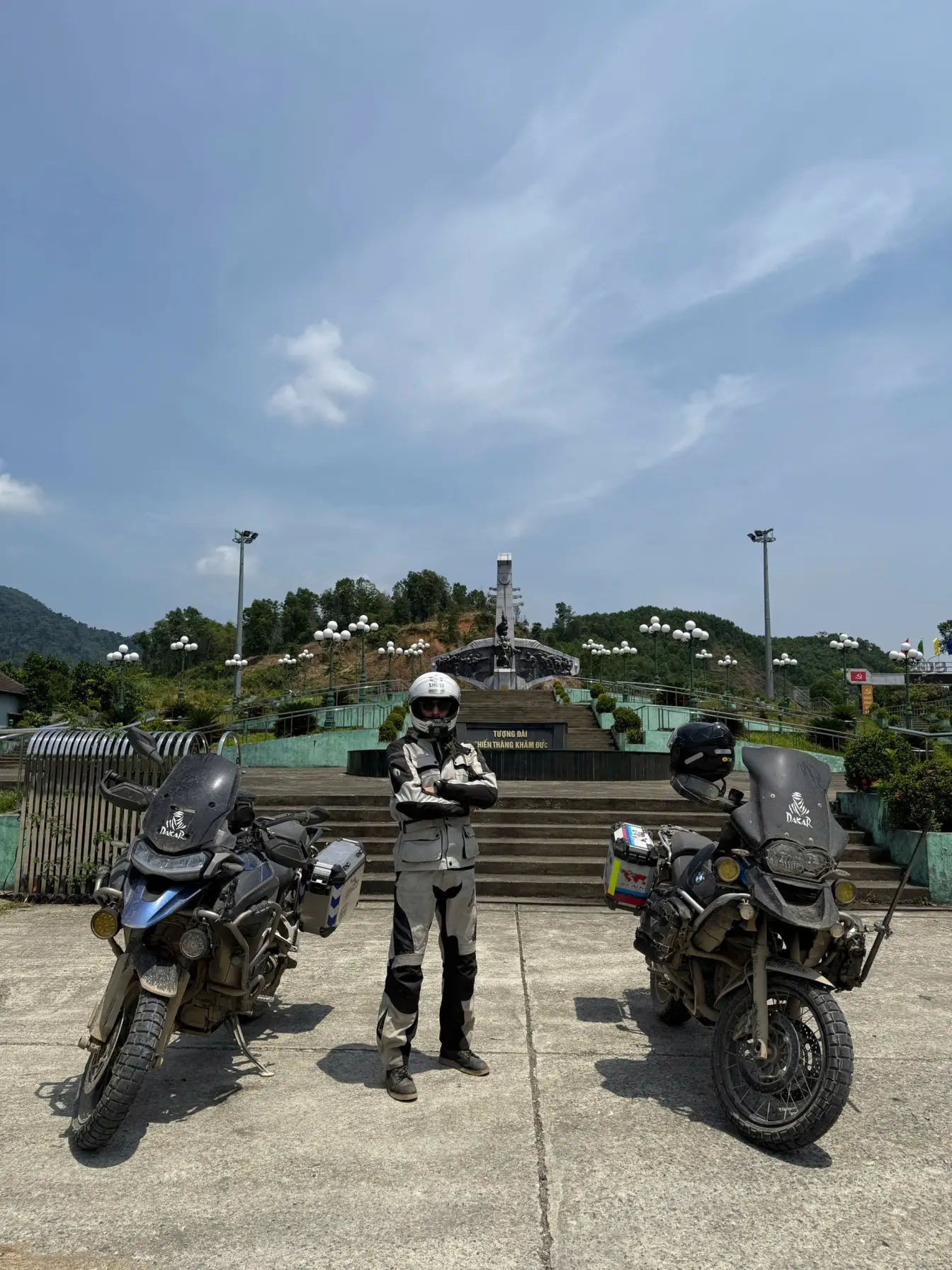
What are the must-have accessories to own before every long distance ride? Long motorbike journeys are all about adventure, long hours or riding, and the open road along with comfort and safety matter. Whether you’re crossing mountain passes in northern Vietnam or cruising along the historic Ho Chi Minh Road, having the right accessories makes all the difference, and for instance, this is not only related to riding in Vietnam, it’s for anyone riding setting off for a long journey on a motorcycle. From reliable riding gear and waterproof layers to handy luggage systems and repair tools, every item helps you stay prepared for whatever the road brings. Before you set off on your next big ride, here’s a simple guide to the essential accessories every long-distance motorcyclist should pack.
- Check out: Explore the amazing landscapes of Vietnam on a motorbike tour
| Accessory Category | Key Items | Why It Matters |
|---|---|---|
| Safety Accessories | Helmet, Eye Protection, Reflective Gear, Crash Guards | Keep you visible and protected in all conditions. |
| Comfort & Convenience | Ergonomic Seat, Handlebar Grips, Phone Mount, Hydration Pack | Reduce fatigue and make long rides more enjoyable. |
| Storage & Packing | Saddlebags, Tank Bags, Bungee Straps, Waterproof Covers | Keep your gear organized and safe from the weather. |
| Tech & Connectivity | GPS, Bluetooth Headset, Power Bank, Action Camera | Stay connected, powered, and document your journey. |
| Maintenance & Repair | Tool Kit, Tire Repair Kit, Chain Lube, Emergency Light | Handle small issues before they become big problems. |
| Adventure Add-ons | Windscreen, Seat Cushion, Camping Gear | Perfect for riders who go beyond the paved roads. |
Essential Accessories for Long Motorbike Journeys: Introduction
Anyone who’s spent more than a few hours on a motorbike knows that the right gear can make or break a trip. It’s not just having the priciest setup or piling on fancy gadgets, it’s about picking what actually helps you stay comfortable, safe, and focused when the road stretches endlessly ahead. I learned that lesson early on, halfway through a sunbaked ride with sore hands and a stiff neck.
A simple neck buff, a pair of breathable gloves, and a waterproof cover would’ve saved me a lot of frustration. Since then, I’ve realized that every small piece of gear matters, not because it looks good, but because it keeps you moving smoothly and lets you enjoy the ride rather than endure it.
Why the Right Accessories Make a Big Difference on Long Rides
On a long journey, little fails quickly turn into big things. A good seat cushion can save your back after hours of riding, a sturdy waterproof bag can protect everything you own from a sudden downpour, and a pair of well-fitted gloves can keep your hands from going numb on winding mountain roads. The right accessories don’t just make the ride smoother they keep you safe, alert, and ready for whatever comes next.
Out there, far from a mechanic or a café, comfort and reliability start to feel like pure luxury. Investing in solid gear isn’t about showing off; it’s about giving yourself the freedom to focus on the joy of the ride instead of the aches and worries that come with being unprepared.
- Check out Motorbike maintaining in rainy season
Balancing Comfort, Safety, and Practicality
Finding the right balance is actually a very important factor. You don’t want to overpack, but you also don’t want to wish you’d brought that one thing you left home.
For me, it comes down to three questions before any ride:
- Will it make me safer?
- Will it make me more comfortable?
- Will it actually fit on the bike?
If an accessory ticks at least two of those boxes, it earns a spot in my panniers. Remember the best setup is the one that lets you ride longer, rest better, and focus on the freedom of the road, not the gear you forgot to bring.
Safety Accessories Every Rider Should Have
When it comes to riding long distances, such as those riding across the Southeast Asia, Africa and or Southeast America, the safety gear isn’t something you think about until you need it, and by then, it’s too late.
Over the years, I’ve learned that investing in proper protection is really a necessary step if you’re into riding, after all it gives you with confidence. Whether you’re cruising coastal highways across Andaman or Hawai, or dodging city traffic, the right safety accessories turn every ride from risky to reassuring. Here are a few essentials I’d never hit the road without.
High-Quality Helmet and Eye Protection
Your helmet is your best friend on the road, literally the one thing between you and serious injury. Skip the cheap, no-name versions and go for a certified full-face helmet from trusted brands like Shoei, Arai, or HJC, I used Schuberth and it was also a very good brand from Germany (It was too bulky, to me).
Expect to spend anywhere from $500 to $2000, depending on the features. Look for good ventilation, removable liners, and a snug fit that doesn’t pinch. Pair it with a clear visor or shatterproof riding goggles for eye protection. I once rode through a swarm of dust and tiny pebbles, without goggles, it felt like getting sandblasted. Lesson learned: protect your head and your vision first.
Reflective Gear and Visibility Tools
It doesn’t matter how experienced you are, if drivers can’t see you, they can’t avoid you. Reflective gear is one of the simplest and cheapest safety upgrades you can make. A reflective vest or jacket panel usually costs around $10–$30, and it can make you stand out in low light or fog.
I also saw some riders with some small LED clip-on lights or reflective tape on my panniers, they cost almost nothing but make a huge difference at night. After one near miss on a dark rural road, I never ride without something that catches the light. It’s not about fashion; it’s about being visible enough to get home safely.
Crash Guards and Protective Pads
Your adventure, classic and even sport bikes needs to have the crash bar. Even careful riders have close calls a slip on gravel, a sudden brake, or a distracted driver.
Crash guards and protective pads are there to take the impact so your body (and your bike) doesn’t have to. A decent set of crash bars costs around $100–$500 (hugely depends on your bike model) and can prevent thousands in repair damage.
Add elbow, knee, and shoulder pads (usually $40–$80 for a full set) for extra protection. I once laid my bike down at low speed, the crash guards took the hit, and my knees didn’t even bruise. Since then, I’ve never considered them optional. They’re not flashy, but they’re worth every cent when things go wrong.
Comfort and Convenience on Long Rides
When you’re riding for hours, imagine Hanoi to Phong Nha national park, comfort isn’t a luxury, it’s essential. The smallest discomfort can grow into a major distraction over time, and that’s not something you want to deal with on a long stretch of road. I’ve learned that comfort gear isn’t about pampering yourself; it’s about staying sharp and relaxed enough to keep enjoying the journey. From your seat to your grips and even how you stay hydrated, these small upgrades can turn a tiring trip into a smooth, steady adventure.
Ergonomic Seats and Handlebar Grips
If you’ve ever finished a long ride (let’s say over 2 weeks at least) feeling like your spine just aged ten years, you’ll understand why an ergonomic seat matters.
A good seat reshapes the way you ride, it supports your posture and absorbs vibrations that slowly wear you down. Prices range from $50 for basic gel pads to $300 for custom touring seats for any adventure motorcycle.
Pair that with soft, anti-slip handlebar grips ($15–$40) to reduce wrist strain and numbness. I swapped mine after one exhausting trip, and the difference was night and day, no more tingling fingers or constant fidgeting. Comfort, in this case, isn’t a bonus, it’s essential maintenance for your body.
Phone Mounts and Navigation Holders
Gone are the days of pulling over every ten minutes to check your map. A reliable phone mount or navigation holder keeps your route in sight without taking your eyes off the road.
Good-quality mounts cost between $50 and $200 (I use SP connect with anti vibration to keep your phone safe) and they’re worth every cent when you’re navigating new terrain.
Choose one that grips tightly and doesn’t shake on rough surfaces. I’ve had cheap ones pop off mid-ride, watching your phone bounce down the highway isn’t an experience you forget. My rule now? Always test the mount before setting off, and make sure it’s waterproof or at least splash resistant. Convenience and safety go hand in hand here.
Hydration Systems and Water Holders
Dehydration creeps up fast when you’re riding in heat or wind for hours at a time. Having a hydration system or water holder within reach can make all the difference. A simple bottle holder costs $10–$20, while a hands-free hydration backpack runs around $40–$80.
I prefer the backpack for long rides, you can sip through a tube without stopping. It might sound unnecessary until you find yourself parched in the middle of nowhere with no shop in sight. Staying hydrated keeps your focus sharp and your body from crashing before the bike does. It’s one of those small things that end up defining how enjoyable your ride really is.
Storage and Packing Accessories
When you’re on the road for days, packing becomes an art form (any rider can confirm this immediately). Too little, and you’ll wish you’d brought more. Too much, and your bike starts feeling like a mule. I’ve learned that how you pack matters just as much as what you pack. The best box, or side-panniers setup keeps your essentials secure, balanced, and easy to reach when you need them. It’s worth experimenting to find the right mix, the sweet spot between comfort, convenience, and not having your gear slide off halfway through the ride.
Saddlebags, Top Boxes, and Tank Bags
Saddlebags and top boxes are every long-distance rider’s most have gears. They carry your items and essentials without making your bike feel like it’s struggling.
Saddlebags start at around $50 for simple canvas types here in Vietnam and can go up to $2500 for versions I often see online. I prefer soft saddlebags for flexibility, they fit odd-shaped items and are easier to remove. A good top box, though, is unbeatable for keeping valuables safe and dry, especially during unexpected rain.
Tank bags (I love them), priced around $40–$200, are perfect for quick access wallet, phone, documents. After years of trial and error, I’ve learned to pack heavier stuff low and light things on top, it keeps the bike steady and makes unpacking at the end of the day much easier.
Cargo Nets and Bungee Straps
If saddlebags are the backbone of your luggage setup, cargo nets and bungee straps are the alternatives. They keep loose items tight and in place (I use box but I always carry few straps with me), perfect for strapping down a jacket, water bottle, or even a bag of snacks you grabbed on the go.
They’re cheap too, usually between $5 and $15, but their usefulness is priceless. I remember losing a sleeping bag once because I didn’t secure it properly never again. Now, I always carry a couple of extra bungees in my toolkit. They take up no space but save you from a world of frustration when something starts flapping or sliding around mid-ride.
Waterproof Covers for Luggage
Weather in Vietnam can change faster than you expect, and getting caught in the rain without waterproof protection is a rookie mistake I’ve made more than once. A decent waterproof cover, usually $20–$50, can keep your gear bone-dry through hours of downpour. I once rode through a storm thinking my bags were sealed only to find everything soaked when I stopped. Since then, I never underestimate a good cover. Some riders go for fully waterproof saddlebags, but even then, an extra layer of protection helps. It’s a small investment that guarantees peace of mind when the sky suddenly turns grey.
Tech and Connectivity Gear
Technology can make a long ride smoother, specially if you’re riding along the remote lands and or planning for off-road and as long as you don’t let it take over the experience. I used to think all I needed was my phone and a map app, but after a few rides where I got lost or ran out of battery halfway through, I started to see the value of proper riding tech. From GPS navigation to helmet comms and power setups, these small gadgets quietly make a huge difference on the road.
- Check out our off-road motorbike tours
GPS Devices and Bluetooth Communication Systems
For Vietnam and pretty much everywhere across Southeast Asia, Google map works best, however, a solid GPS device takes the stress out of navigating unfamiliar roads. Unlike your phone, it’s built to handle vibration, rain, and glare. Expect to pay around $150–$400 for a quality one from brands like Garmin or TomTom.
I used to rely solely on my phone until it overheated in the sun and died mid-ride — lesson learned. Bluetooth intercoms are another game-changer, especially if you’re riding with friends. They cost $80–$250, and they let you chat, take calls, or listen to music without fumbling for your phone. Once you’ve used one, it’s hard to imagine a long trip without it, communication makes the miles feel shorter.
Power Banks and USB Charging Ports
Few things are worse than watching your phone or camera die when you’re far from the next plug. A sturdy power bank or a built-in USB port keeps your devices alive and your maps running. A good power bank costs around $20–$50, but I’d spend a bit more for one that’s shockproof and weather-resistant. USB charging ports for bikes usually go for $15–$40 and can be installed directly onto your handlebar or near the dashboard. I learned to always bring a spare cable too they seem to vanish right when you need them most. Staying charged means staying connected, and sometimes, staying safe.
Action Cameras for Travel Documentation
There’s something special about watching your journey later and realizing just how far you’ve gone. An action camera like a GoPro or Insta360 isn’t just for showing off, it helps capture memories and even record useful footage if something goes wrong.
Prices range from $150 to $500, depending on features. I once recorded a coastal ride that I thought was uneventful until I watched it back and caught the subtle shifts of light and scenery that I’d missed in the moment. Mount it on your helmet or handlebar, and you’ve got a rolling diary of your adventures. It’s a great way to relive the road long after you’ve parked the bike.
Maintenance and Repair Essentials
No matter how well you plan your ride, things can and do go wrong on the road. A loose bolt, a flat tire, or a dry chain can quickly ruin your day if you’re not prepared.
Over time, I’ve gained experience that carrying a few basic maintenance tools isn’t about expecting trouble, learn how to fix a flat tyre and it’s about being ready for it. Even a quick roadside fix can make the difference between a small delay and a long, frustrating wait for help. Think of it as packing peace of mind for the journey.
Compact Tool Kits and Tire Repair Kits
A compact tool kit is like a first aid kit for your bike, you hope you won’t need it, but you’ll be grateful when you do. A good kit usually includes wrenches, screwdrivers, pliers, and a few Allen keys. Prices range from $25 to $70, depending on quality. I’ve had mine save the day more times than I can count, from tightening a loose mirror to fixing a rattling chain guard.
Add a tire repair kit ($15–$40) and a small pump or CO₂ inflator, and you’re set for most emergencies. The first time I patched my own tire on a dusty roadside, I felt like a true rider — it’s a small victory that keeps you moving forward.
Chain Lubricants and Cleaning Supplies
Your bike’s chain takes a beating on long rides, and a little maintenance goes a long way. I used to ignore it until I started hearing that annoying squeak halfway through a trip.
Now, I always carry a small can of chain lubricant ($10–$20) and a rag for quick cleaning. It takes five minutes at a rest stop and keeps your ride smooth and quiet. For longer journeys, I also bring a small brush and degreaser — they barely take up space but make post-ride cleanup so much easier. A well-lubed chain doesn’t just feel better; it saves wear on your bike and helps you ride farther with less effort.
Emergency Lights and Reflectors
When you’re stuck by the side of the road after dark, visibility becomes something more than essential. A compact emergency light or LED flasher can alert drivers long before they reach you. They usually cost $10–$25, and they’re worth every cent. I once broke down at night on a remote stretch my small flashing light made sure passing vehicles saw me well in advance. Reflective triangles or clip-on blinkers are also great for low visibility situations.
They take almost no space in your bag but can literally save your life when things go wrong. Always pack a spare set of batteries or a USB-rechargeable option they’re one of those things you don’t think about until you really need them.
Optional Accessories for Adventure Riders
Once you’ve covered the basics, it’s the extra touches that take your riding experience from good to great. Adventure riding isn’t just about the long-distance distance, it’s about comfort, adaptability, and being ready for whatever the road throws at you.
Over time, I’ve picked up a few optional accessories that make long rides smoother and more enjoyable. You don’t need them to start, but once you try them, it’s hard to imagine hitting the open road without these little upgrades.
Windscreens and Hand Guards
When you’re facing long stretches of open highway or rough trails, wind protection makes a world of difference. A good windscreen, priced between $100 and $300 for adventure motorbikes, can cut fatigue by reducing wind pressure on your chest and helmet. I didn’t believe it mattered until I upgraded mine suddenly, I could ride longer without feeling battered by the breeze.
Pair that with hand guards ($100–$250), and you’ll protect your hands from flying debris, bugs, and chilly air. They’re especially useful if you ride early in the morning or through unpredictable weather. It’s one of those upgrades that doesn’t just add comfort, it adds endurance.
Seat Cushions for Extra Comfort
Even the best stock seats can feel like torture after a few days riding along the trails or on the road. A seat cushion might seem like a luxury, but on multi-day rides, it’s a lifesaver. Gel and air cushions usually range from $50 to $100, and they can transform how your body feels after a full day of riding. I remember my first 10-hour ride without one, by the end, I was counting down the minutes to every stop. Now, I don’t leave without it. It keeps blood flow steady and takes the edge off bumps and vibrations, especially on uneven terrain. Simple fix, huge reward.
Portable Camping Gear for Overnight Rides
For those who like to wander off the grid, portable camping gear opens up a whole new kind of freedom. A compact tent, sleeping bag, and small stove can turn a roadside stop into a cozy campsite. You don’t need to spend a fortune lightweight camping sets start around $100, and there are endless ways to customize your setup.
I’ve camped beside rivers, rice fields, and mountain passes places I’d never reach without my gear. It’s not about roughing it; it’s about flexibility. Knowing you can stop anywhere for the night gives you a sense of independence that no hotel ever could.
FAQs: Long motorcycle trip essentials
What are the must-have accessories for long motorbike trips?
A high-quality helmet, gloves, proper riding jacket, waterproof luggage, a tool kit, and a good phone mount are the essentials. These cover your comfort, safety, and navigation needs on any long journey.
How do I pack efficiently for a long motorbike journey?
Pack light, balance the weight evenly on both sides, and keep heavier items low. Use compression bags and pack only what you truly need, less is always better when space is tight
Are tech gadgets like GPS and cameras worth it for long rides?
Yes, absolutely. A reliable GPS for off-riding, or navigation like google Map helps you stay on track, while an action camera is great for capturing memories and recording routes, just make sure you have backup power.
What’s the best way to secure luggage on a motorbike?
Use saddlebags or box for stability, then add cargo nets or bungee straps for extra hold. Double-check every strap before riding, even a small shift can throw off balance at high speed.
Can I buy or rent accessories in Vietnam for touring?
Yes. Most major cities and rental shops offer quality helmets, saddlebags, phone mounts, and rain gear for sale or rent. It’s easy and affordable, especially in popular riding spots.
Conclusion: Motorcycle Gear Guide & Essential touring gear
Long rides teach you more about yourself than the road. Every kilometer brings new lessons, some about the landscape, others about the gear you rely on. Over time, I’ve realized that comfort and safety aren’t luxuries, they’re what keep the journey enjoyable. Choosing the right accessories isn’t about buying more stuff, t’s about finding what truly works for you. Whether it’s a solid helmet, a comfy seat, or a waterproof bag that saves your gear from a downpour, each item plays its part in keeping you rolling smoothly and confidently.
Essential Accessories for Long Motorbike Journeys: Ride Safer, Smarter, and Further. And that’s what it all comes down to. Invest in good equipment, prepare for the unexpected, and keep your setup simple and functional. When you’re ready and comfortable, the ride becomes less about reaching the destination and more about enjoying every stretch of road in between.
About the author
Hamid is an adventure rider based in Vietnam, known for his love of long-distance journeys and exploring hidden backroads. With years of experience riding across Southeast Asia, he’s learned the ins and outs of bike performance, comfort, and reliability on every kind of terrain. When he’s not tweaking his setup or testing new gear, you’ll find him chasing quiet coastal roads or winding mountain passes always looking for the next great ride. His tips come straight from the saddle, shaped by real miles and honest lessons learned on the road.




